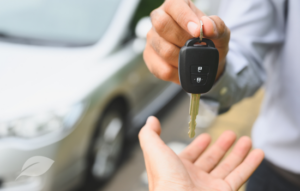
In 2020, the world changed in several ways. One that got a lot of headlines during the pandemic was the shortage of new vehicles and the sharp uptick in car prices. Supply chain issues and chip shortages made new cars hard to come by. Here in 2023, we see things are not returning to the status quo of pre-pandemic. So, before you decide to pony up for a new ride, there are a few things to understand that may differ from the last time you needed to purchase a new vehicle.
First of all, the days of full car lots with many choices have mostly gone away. The old model of keeping a large inventory on car lots has shifted. The new model is to have fewer vehicles; usually, only the top-end options are on those vehicles. They are then ordering the vehicle that the customer would like to arrive at a date in the future. The pandemic showed car dealers that buyers were willing to order and wait on their vehicles. This new model of fewer cars on the lot also removed the need for car dealers to hold sales and discounts to move cars off the lot. They keep a few demo selections and order the vehicle you want to come to the lot or deliver to your home. All at sticker price or above rather than negotiation with the clients to drive the car off the lot today.
The price of your new vehicle has reflected this change as well. Coupled with inflation, we have seen significant jumps in average car prices since 2019. The average cost for a new vehicle was $33,741, with an average payment of $562 per month in 2019, but it has jumped to $46,229 and an average payment of $733 per month in 2023. Now, this is taking the average of all makes and models, but the jump of $12,488 or 37% in the average sale price and a 30.4% jump in the average monthly payment has made new cars out of reach for many.
Since industry-wide sales numbers have fallen, dealers have also switched to reducing the number of models offered. Dropping many of the lower-cost models from car makers’ lineups helps offset the lower sales. Dealers need fewer total sales to hit similar numbers they had previously.
Because of this, used cars are also more expensive than they were pre-pandemic. Pre-owned vehicles have shot up in price more than new vehicles. When the shortages rolled through, pre-owned vehicles received a premium. According to industry data, the average used car price hit around $30K at the end of 2021 and has remained high. During the pandemic, the values of used cars outpaced depreciation. Allowing cars to be sold for more than their book value. This will throw the used car market into a higher price point for some time as the shortage of new cars during the pandemic will need to cycle through the used car market in the next several years. Also, the changes in how dealers hold inventory will cause more demand in the used car markets that will be harder to satisfy until more vehicles are available to trickle down into the used car market.
So, if you are in the market for a new car, be sure to do your research ahead of time and come to the car lot prepared. The landscape has changed, but understanding what has changed will allow you to make the best-informed decision moving forward.


